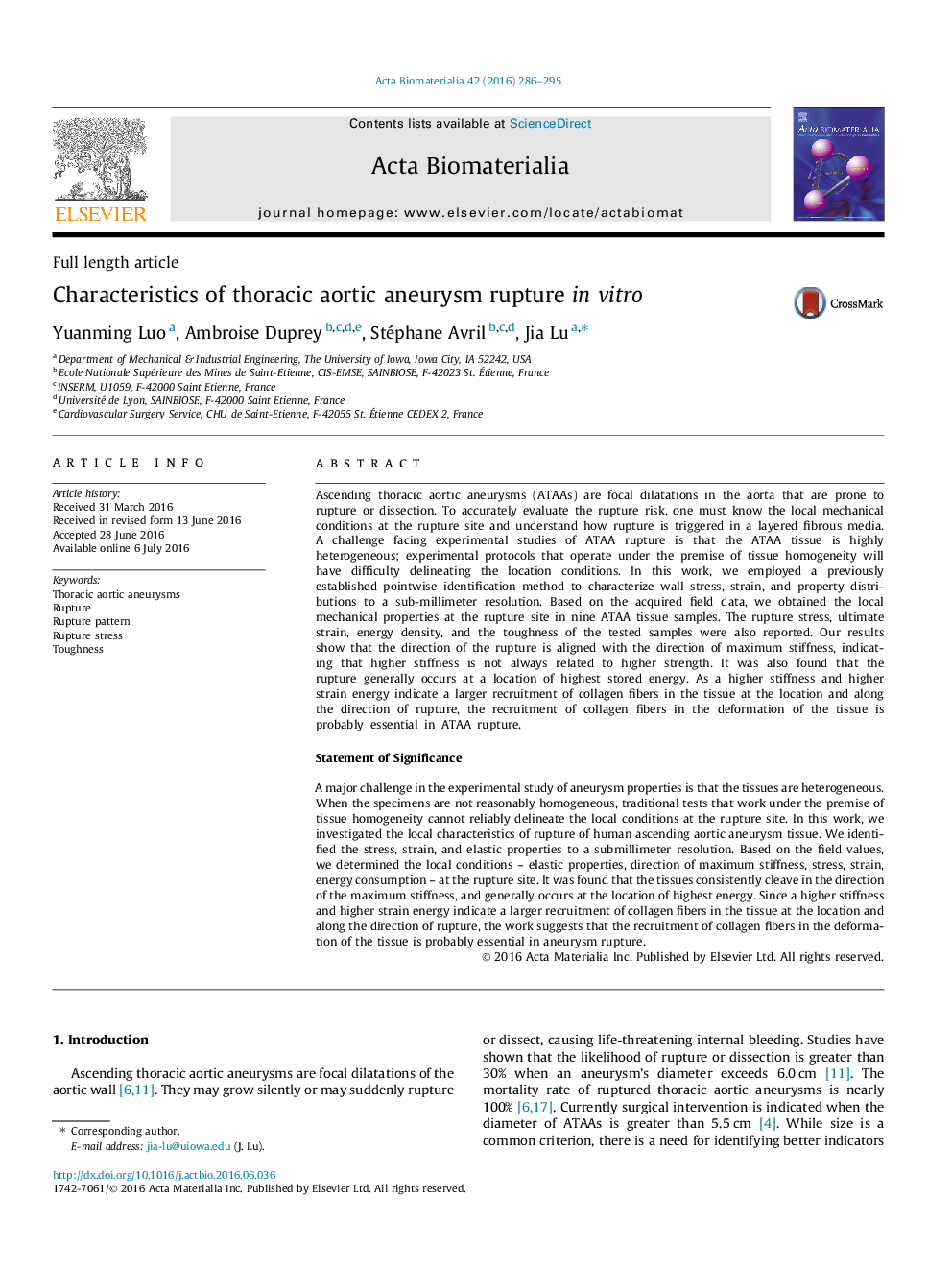| Article ID | Journal | Published Year | Pages | File Type |
|---|---|---|---|---|
| 6450239 | Acta Biomaterialia | 2016 | 10 Pages |
Ascending thoracic aortic aneurysms (ATAAs) are focal dilatations in the aorta that are prone to rupture or dissection. To accurately evaluate the rupture risk, one must know the local mechanical conditions at the rupture site and understand how rupture is triggered in a layered fibrous media. A challenge facing experimental studies of ATAA rupture is that the ATAA tissue is highly heterogeneous; experimental protocols that operate under the premise of tissue homogeneity will have difficulty delineating the location conditions. In this work, we employed a previously established pointwise identification method to characterize wall stress, strain, and property distributions to a sub-millimeter resolution. Based on the acquired field data, we obtained the local mechanical properties at the rupture site in nine ATAA tissue samples. The rupture stress, ultimate strain, energy density, and the toughness of the tested samples were also reported. Our results show that the direction of the rupture is aligned with the direction of maximum stiffness, indicating that higher stiffness is not always related to higher strength. It was also found that the rupture generally occurs at a location of highest stored energy. As a higher stiffness and higher strain energy indicate a larger recruitment of collagen fibers in the tissue at the location and along the direction of rupture, the recruitment of collagen fibers in the deformation of the tissue is probably essential in ATAA rupture.Statement of SignificanceA major challenge in the experimental study of aneurysm properties is that the tissues are heterogeneous. When the specimens are not reasonably homogeneous, traditional tests that work under the premise of tissue homogeneity cannot reliably delineate the local conditions at the rupture site. In this work, we investigated the local characteristics of rupture of human ascending aortic aneurysm tissue. We identified the stress, strain, and elastic properties to a submillimeter resolution. Based on the field values, we determined the local conditions - elastic properties, direction of maximum stiffness, stress, strain, energy consumption - at the rupture site. It was found that the tissues consistently cleave in the direction of the maximum stiffness, and generally occurs at the location of highest energy. Since a higher stiffness and higher strain energy indicate a larger recruitment of collagen fibers in the tissue at the location and along the direction of rupture, the work suggests that the recruitment of collagen fibers in the deformation of the tissue is probably essential in aneurysm rupture.
Graphical abstractDownload high-res image (191KB)Download full-size image
